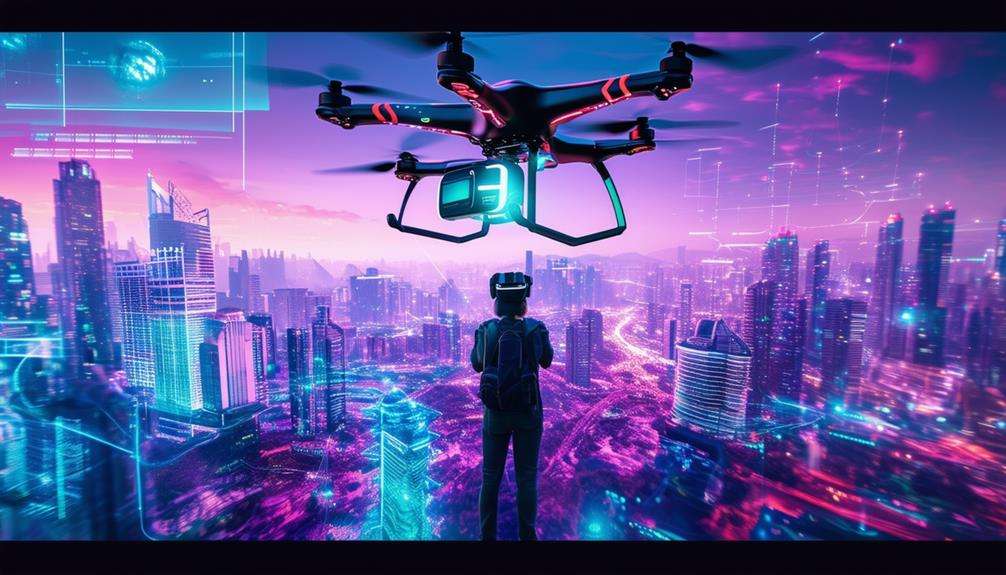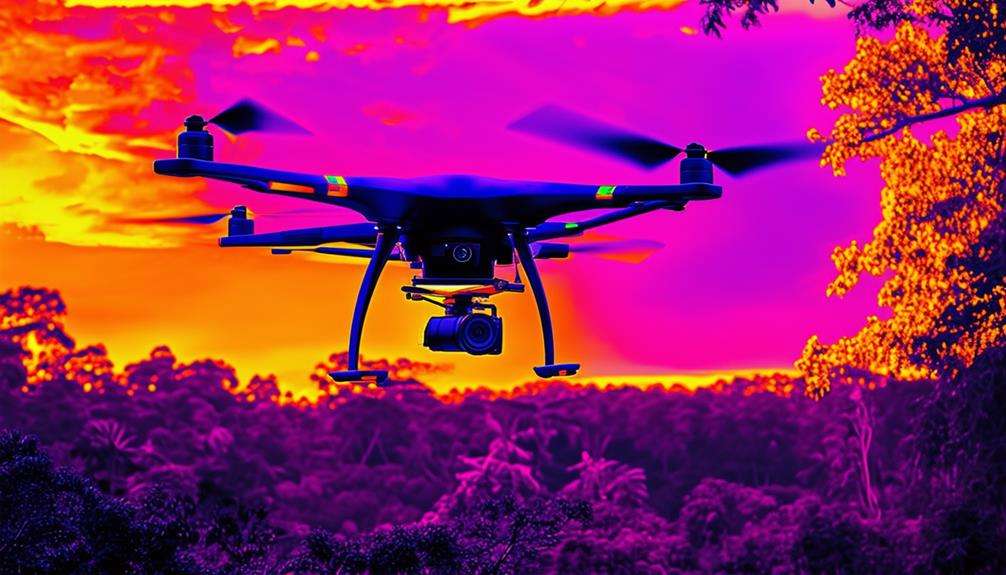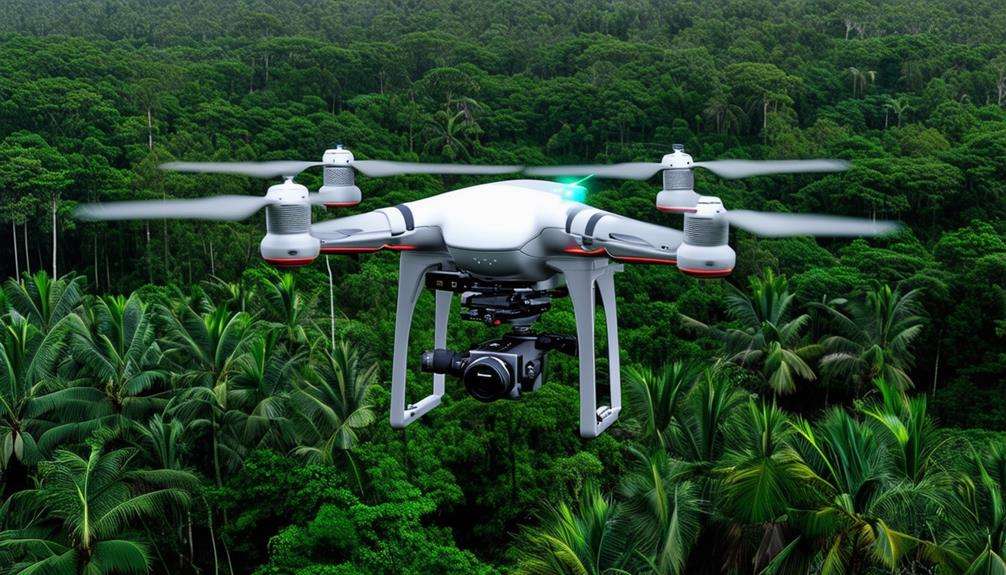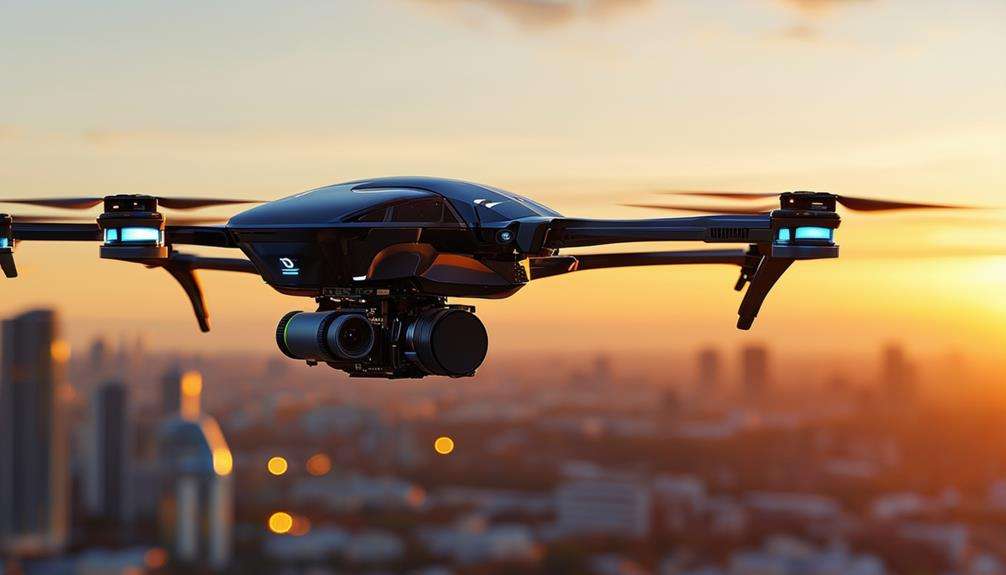The Impact of Drone Technology on Modern Aviation
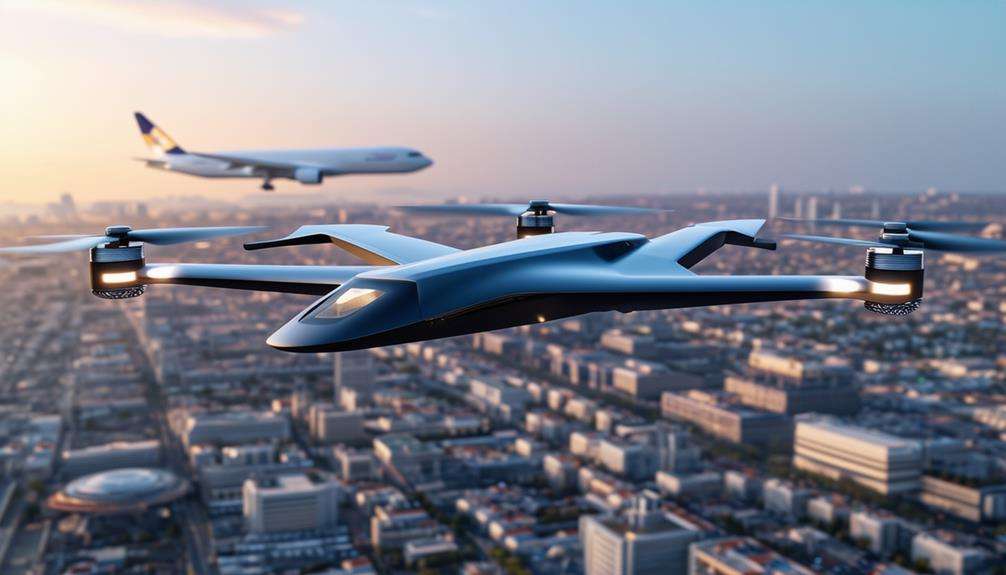
Drone technology has significantly transformed modern aviation. From enhancing surveillance with real-time data transmission to enabling cost-effective aerial inspections, drones are reshaping the industry.
Imagine a world where aircraft maintenance is proactive, airspace management is more efficient, and border security is significantly tightened. These advancements are just the beginning. What future opportunities might this technology reveal for commercial aviation and beyond?
Evolution of Drone Technology
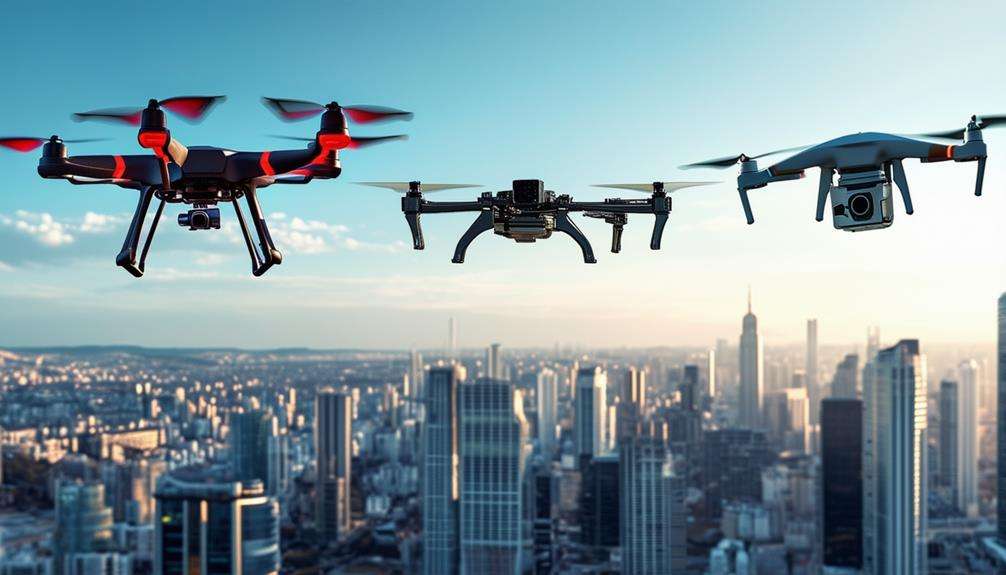
Drone technology has evolved remarkably since its early days with unmanned balloons in 1849, progressing to the sophisticated systems we see today. This evolution has been marked by several key advancements. During World War I and World War II, unmanned aerial vehicles (UAVs) became crucial for military operations, driving technological innovations in aviation.
The Cold War period further accelerated UAV development, particularly in surveillance, laying the groundwork for the diverse commercial applications we see now, from package delivery to aerial photography. Today, modern drones are categorized into types like multi-rotor, fixed-wing, single-rotor, and hybrid VTOL, each designed for specific tasks and industries.
Advancements in aerospace, robotics, and computer science have significantly improved drone components such as airframes, propulsion systems, navigation systems, control systems, and payloads. These innovations haven't only enhanced current capabilities but also paved the way for future drones with even more advanced features. As the technology continues to advance, the aviation sector will likely see further integration of drones, revolutionizing commercial applications and expanding their roles across various industries.
Enhancing Surveillance Capabilities
Enhancing surveillance capabilities in modern aviation prominently features advanced drone technology. This technology provides superior aerial monitoring and real-time data collection. These drones go beyond simple image capture. They're equipped with sophisticated threat detection systems that enable rapid responses to potential risks. Integrating these technologies significantly boosts both security and operational efficiency in aviation.
Improved Aerial Monitoring
Advancements in drone technology have significantly improved aerial monitoring, offering crucial surveillance capabilities for modern aviation. Equipped with advanced imaging systems and real-time data transmission, drones can effectively monitor extensive areas such as airports and airspace. Utilizing drone swarms further enhances tracking and response to security threats and unauthorized activities, ensuring a safer aviation environment.
Here's how drone technology enhances aerial monitoring:
| Feature | Benefit | Application |
|---|---|---|
| Advanced Imaging | High-resolution visuals | Detailed area surveillance |
| Real-Time Data Transmission | Instant updates | Immediate threat response |
| Drone Swarms | Large area coverage | Comprehensive monitoring |
| Agility and Interconnectedness | Swift, coordinated actions | Efficient security operations |
The agility and interconnectedness of drone swarms make them invaluable for surveillance and response in aviation operations. Deploying multiple drones simultaneously allows for constant vigilance over critical infrastructure, enabling rapid identification and mitigation of potential security threats. This enhanced monitoring capability ensures a more secure and efficient aviation system, safeguarding assets and people alike.
Benefits of Drone Technology in Aviation
- Advanced Imaging: Drones equipped with high-resolution cameras provide detailed visuals, crucial for monitoring and surveillance operations.
- Real-Time Data Transmission: Instant data updates facilitate immediate responses to potential threats, enhancing overall security.
- Drone Swarms: Coordinated drone swarms can cover large areas efficiently, ensuring thorough monitoring.
- Agility and Interconnectedness: Swift and coordinated drone actions contribute to efficient security and operational management in aviation settings.
Real-time Data Collection
Building on the advantages of improved aerial monitoring, real-time data collection significantly enhances surveillance capabilities in aviation by delivering instant, actionable insights. By leveraging advanced imaging systems, drones can monitor vast areas and airspace with exceptional precision, ensuring a constant, detailed view of critical zones, and guaranteeing that no activity goes unnoticed.
Real-time data transmission is transformative in this domain. As drones capture high-resolution images and videos, they can immediately relay this information to central command centers. This rapid data transmission allows for the real-time tracking of security threats and unauthorized activities, enabling prompt and informed responses.
The agility of drone technology further elevates surveillance operations. Unlike traditional, stationary systems, drones can quickly move to areas requiring immediate attention, making surveillance operations more dynamic and responsive. This agility ensures that evolving situations can be swiftly addressed, maintaining a high level of security.
Moreover, the interconnected nature of drone networks facilitates coordinated monitoring efforts. Multiple drones can operate in tandem, sharing data and covering more ground efficiently. This interconnectedness ensures comprehensive surveillance, providing a robust toolset to maintain and enhance aviation security.
Advanced Threat Detection
Drone technology significantly enhances aviation's surveillance capabilities through advanced threat detection systems. By equipping drones with specialized sensors, unauthorized activities and security threats can be detected more efficiently. These sensors help identify anomalies that traditional surveillance methods might overlook.
Drones equipped with thermal cameras and infrared sensors provide real-time monitoring, crucial for prompt threat detection. These cameras capture heat signatures, enabling the identification of hidden objects or individuals, even in low-visibility conditions. The continuous data stream from drones allows for swift tracking and response to potential security breaches in airports and airspace.
A key benefit of drone technology in aviation surveillance is its proactive security measures. Drones can continuously patrol and monitor vast areas, identifying threats before they escalate, allowing for the implementation of preventive actions to enhance security.
Airspace Management Advancements
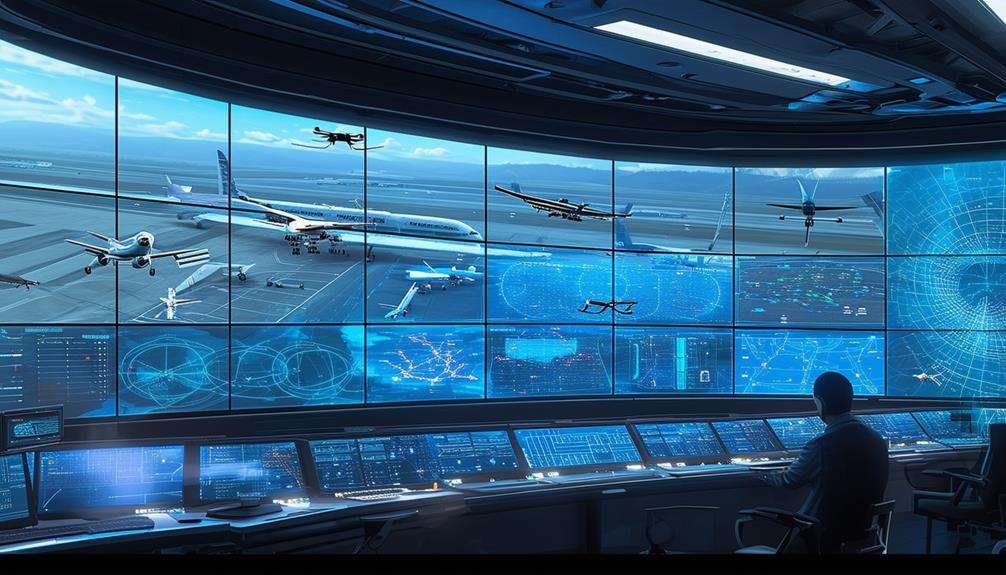
Advancements in airspace management have been significantly enhanced by modern drone technology, which provides real-time monitoring capabilities. These advancements enable dynamic airspace management by collecting and analyzing precise data to optimize flight paths and reduce congestion. Automated drone systems continuously conduct surveillance, improving situational awareness and the efficiency of air traffic control operations.
Drone technology has transformed airspace management in several critical ways:
- Real-time Monitoring: Drones deliver immediate insights into airspace conditions, allowing for swift responses to potential hazards and emergencies.
- Dynamic Management: Data-driven decisions facilitate adaptive airspace management, reducing congestion and enhancing overall safety.
- Enhanced Awareness: Continuous monitoring by automated drone systems increases situational awareness and supports proactive risk management.
These improvements ensure a safer, more efficient, and responsive airspace environment.
Cost-Effective Aerial Inspections
Utilizing drone technology can significantly reduce inspection times, enhance accuracy, and lower operational costs. Drones enable faster and more precise inspections, streamlining maintenance processes and increasing safety standards. This reduction in downtime and cost leads to more efficient operations, offering substantial savings.
Reducing Inspection Time
Leveraging advanced drone technology, aviation inspections can now be completed in half the time they used to, significantly reducing costs and improving efficiency. This innovation has transformed the aviation industry, making it more cost-effective and operationally efficient.
Drones equipped with high-resolution cameras and sensors can rapidly cover large areas, capturing detailed imagery and data. This capability minimizes inspection time while ensuring thorough assessments of aircraft, runways, and infrastructure.
Key benefits include:
- Speed and Efficiency: Drones can perform inspections much faster than traditional methods, greatly enhancing operational efficiency.
- Enhanced Safety: By reducing the need for human inspectors to access hazardous environments, drones improve safety measures.
- Cost-Effectiveness: The reduced inspection time translates into lower labor costs and minimized downtime, making drone inspections a cost-effective solution for the aviation industry.
Enhancing Inspection Accuracy
Expanding on the efficiency gains from reduced inspection time, drone technology also significantly enhances inspection accuracy, offering cost-effective and precise aerial assessments. Drones provide a level of accuracy that traditional methods cannot achieve. They can meticulously scan aircraft, runways, and other complex aviation infrastructure, identifying issues that might be missed during manual inspections.
Comparison of Inspection Methods
| Method | Manual Inspection | Drone Inspection |
|---|---|---|
| Cost | Higher due to labor and downtime | Lower due to automation |
| Accuracy | Prone to human error | High accuracy with advanced sensors |
| Time | Lengthy and labor-intensive | Quick and efficient |
By integrating drone technology into your maintenance procedures, you substantially enhance safety. Drones provide detailed views of potential issues, allowing for timely and precise interventions. This proactive approach safeguards the integrity of your aviation infrastructure, ultimately leading to enhanced safety for both personnel and equipment.
Moreover, the cost-effective nature of drone inspections allows for more efficient resource allocation without compromising the thoroughness of the checks. Embracing this technology in modern aviation leads to a future where inspections are not only faster but also far more reliable.
Lowering Operational Costs
Drones significantly reduce operational costs by providing cost-effective and efficient aerial inspections of critical aviation infrastructure. Traditional inspection methods often involve substantial labor, time, and expenses, but drones offer a transformative solution.
Here's how drone technology can make a difference:
- Reduce Labor Costs: Drones eliminate the need for large inspection teams and expensive equipment.
- Minimize Downtime: Quick and comprehensive aerial inspections mean less downtime for runways and hangars.
- Lower Maintenance Expenses: Early detection of issues prevents costly repairs and extends the life of aviation infrastructure.
Using drones for aerial inspections can cut operational costs by up to 50%. Equipped with advanced imaging technologies, drones perform detailed inspections at a fraction of the cost compared to manned methods. This ensures the integrity of your aviation infrastructure while optimizing resource allocation.
Efficient drone inspections enable maintenance teams to target problem areas more precisely, resulting in significant savings in maintenance expenses. Consequently, adopting drone technology for aerial inspections allows aviation organizations to allocate their budgets more effectively, ensuring both financial and operational efficiency.
Maintenance and Safety Improvements
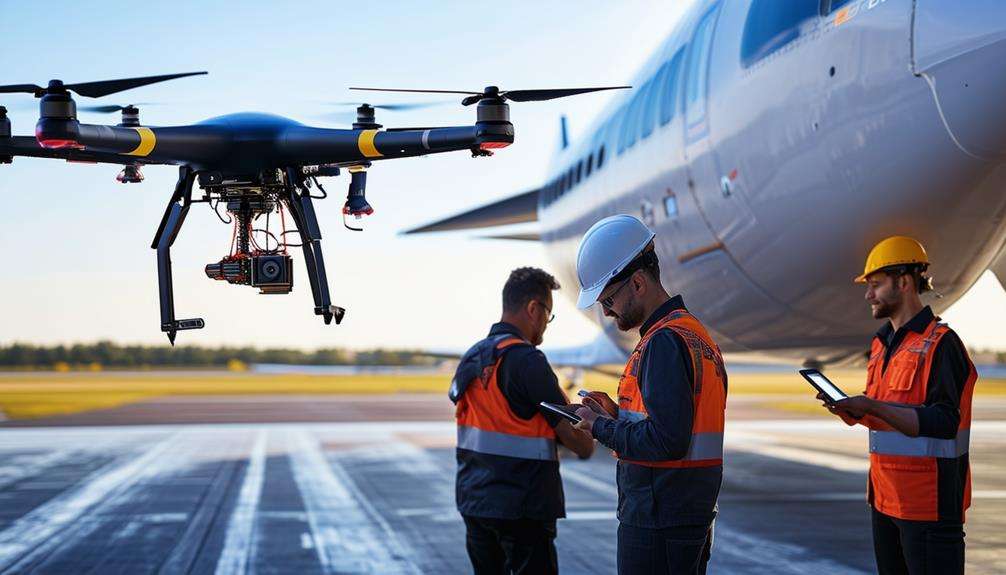
Regularly utilizing drone technology in aviation maintenance has revolutionized inspections, making them faster, more accurate, and cost-effective. Drones equipped with advanced cameras and sensors enable thorough visual inspections of aircraft, runways, and structures. This ensures even the smallest issues are identified promptly, minimizing the risk of accidents and enhancing overall safety.
Drones significantly reduce downtime by streamlining the inspection process. Traditional methods are often time-consuming and labor-intensive, whereas drones make the process quicker and more precise, saving time and lowering maintenance costs. This efficiency keeps aircraft in service longer.
Additionally, drones eliminate the need for extensive scaffolding or ground crew, reaching hard-to-access areas effortlessly and ensuring the integrity of aviation infrastructure.
Incorporating drone technology into your maintenance routine transforms safety and operational efficiency. The precise capabilities of drones ensure that aviation maintenance procedures are more reliable and effective than ever before.
Innovations in Research Missions
The integration of drone technology into research missions has significantly improved the efficiency and scope of scientific investigations. Drones equipped with specialized sensors can now collect aerial data with greater precision and cost-effectiveness than ever before, revolutionizing data collection across various environments.
Consider these three key innovations:
- Environmental Monitoring: Drones facilitate detailed monitoring of ecosystems, wildlife tracking, and studying the impacts of climate change. Researchers can gather real-time data on air quality, vegetation health, and animal populations without disturbing natural habitats.
- Geological Surveys: Drones enhance the safety and accuracy of geological surveys. They enable mapping of terrains, soil composition analysis, and monitoring of volcanic activity from a safe distance, providing valuable insights without endangering human lives.
- Remote Area Access: Drones excel at accessing hard-to-reach areas such as dense forests, high mountains, and remote islands. They can deliver detailed data that was previously difficult or impossible to obtain.
These advancements in drone capabilities have transformed research missions across various fields. Researchers now have the tools to conduct thorough and efficient studies, enhancing our understanding of the natural world and its complex systems.
Border Security Enhancements
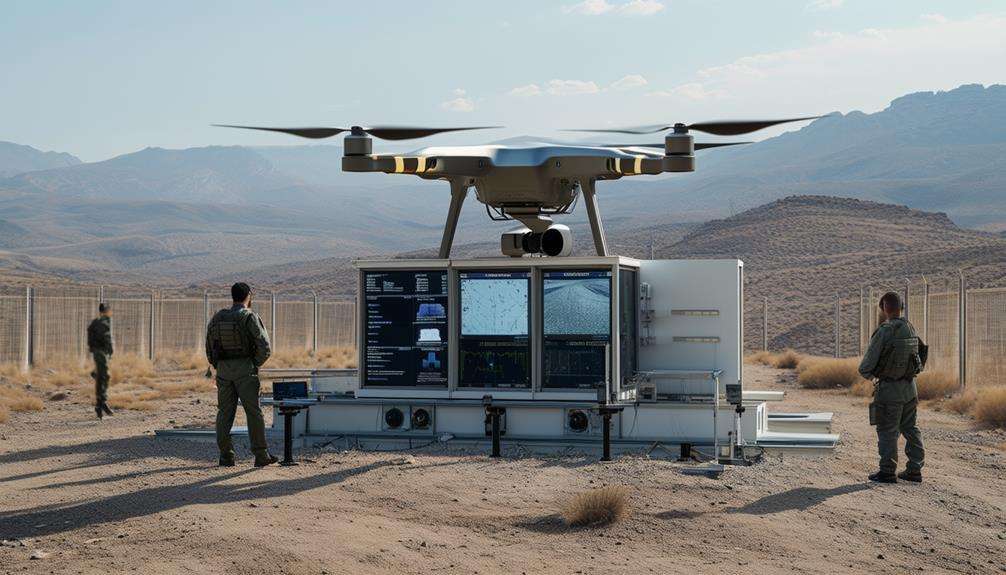
In recent years, border security has significantly improved through the use of real-time monitoring and surveillance capabilities provided by drone technology. Drones equipped with advanced sensors and cameras can detect unauthorized crossings and suspicious activities far more efficiently than traditional methods. This enhancement allows enforcement agencies to be more effective and respond faster to potential threats.
Drones are especially crucial in monitoring remote terrains, which are often the most challenging areas for border patrols to cover. By flying over these difficult landscapes, drones gather vital information that enhances situational awareness and coordination among enforcement agencies.
| Aspect | Emotion Evoked |
|---|---|
| Real-time monitoring | Relief and Security |
| Detection of unauthorized crossings | Confidence and Trust |
| Faster response times | Hope and Reassurance |
Thanks to these advancements, border security operations have seen a notable improvement. The enhanced situational awareness provided by drones enables agencies to make informed decisions quickly, bolstering security. Clearly, drone technology is not just an asset but a transformative tool for border security, ensuring that communities are safer than ever before.
Commercial Aviation Applications
Building on the success of drones in border security, their integration into commercial aviation is revolutionizing the industry by improving operational efficiency and safety. Here are key ways drones are making a significant impact:
- Aircraft Inspections:
- Drones enable faster and more thorough aircraft inspections, significantly reducing downtime and maintenance costs.
- Enhanced Safety Measures:
- Drones allow for detailed inspections of aircraft structures and components, ensuring strict adherence to safety protocols.
- Optimized Airport Operations:
- Drones facilitate smoother baggage handling, security checks, and overall airport operations, enhancing the passenger experience.
Drone technology is projected to save the commercial aviation industry $15 billion annually by 2035 due to its impact on operational efficiency. The adoption of drones is expected to increase by 25% annually, highlighting the rapid pace at which this technology is being integrated.
This integration not only cuts costs but also creates a safer and more efficient flying environment for passengers. By leveraging drones, airlines can minimize delays, improve safety, and enhance the overall travel experience, ensuring passengers benefit from the latest advancements in aviation technology.
Future Opportunities in Aviation
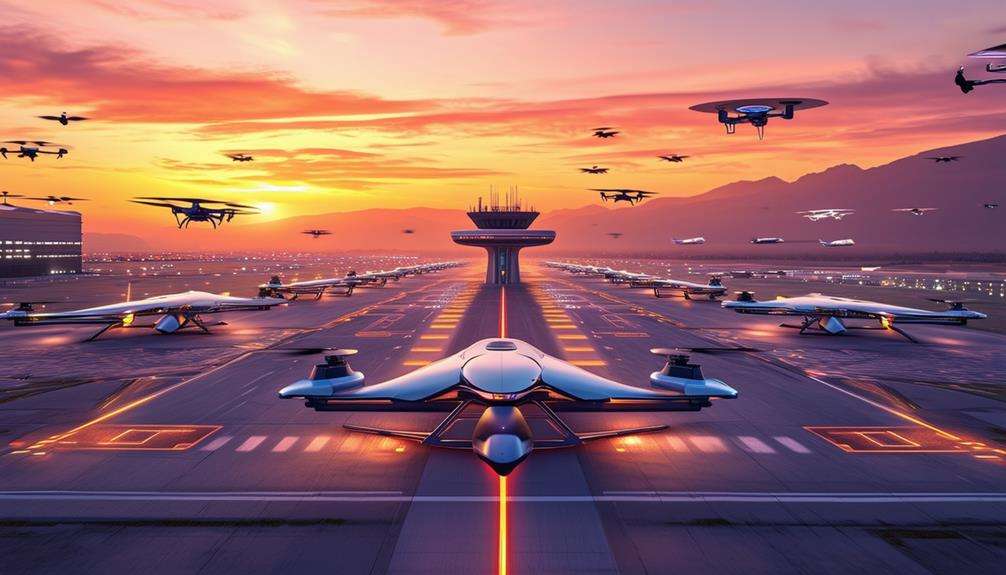
As drone technology continues to advance, emerging opportunities in aviation promise to transform air traffic management and environmental monitoring. Drone swarms, comprised of multiple drones working in unison, can optimize air traffic management, enhancing both safety and efficiency in the skies. These swarms offer advanced applications poised to revolutionize aviation practices.
In the future, drone swarms will enable sophisticated environmental monitoring. They can track pollution levels, monitor wildlife, and assist in disaster response. This capability not only improves environmental health but also supports sustainable aviation practices. Aviation professionals can leverage these advancements to mitigate environmental impacts more effectively.
While drone technology is still in its early stages, its potential for transformative applications is vast. As the technology matures, more innovative uses will emerge. For example, integrating drone swarms into existing aviation systems can lead to seamless operations and real-time data collection. This will open new avenues for research and development, ensuring that the future of aviation is greener and more technologically advanced. Embracing these opportunities will be crucial for staying ahead in this rapidly evolving field.
Conclusion
Drone technology has significantly transformed modern aviation by enhancing surveillance, streamlining inspections, and improving safety. These advancements make airspace management more efficient and maintenance both proactive and cost-effective.
Drones are also advancing research missions, securing borders, and creating new opportunities in commercial aviation. Embrace these innovations, as drones aren't just a glimpse of the future—they are revolutionizing aviation today. The sky is no longer the limit; it's just the beginning.

